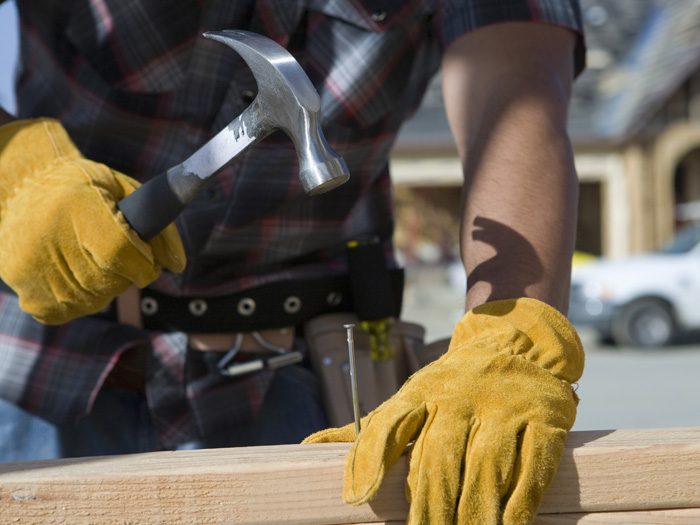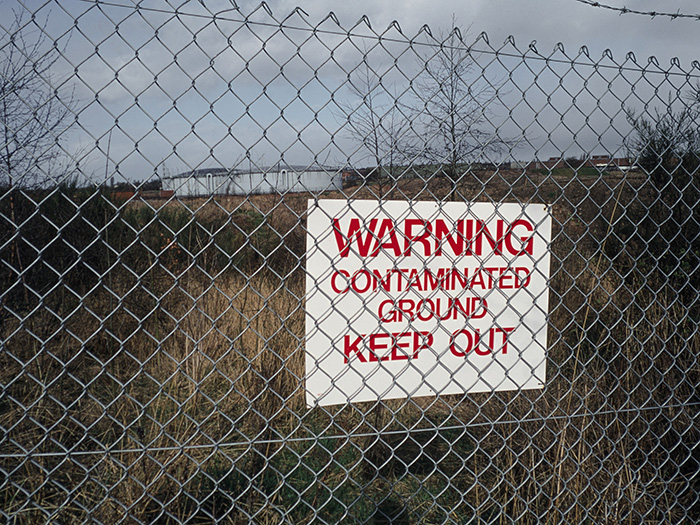Construction Insurance Pricing Reaches a Crossroad. Are Labor and Material Shortages and Climate Change to Blame?

Commercial insurance property prices have continued to soar in the face of ever-increasingly unpredictable natural disasters.
The higher cost and shortage of construction materials caused by the current global supply chain crisis and rising inflation have only exacerbated the problem.
Those are some of the key findings from recent whitepaper, “Why Commercial Property Insurance Prices are Higher and What Can be Done About It,” by Westchester, a Chubb company.
Climate change is causing increasingly more unpredictable, frequent and severe catastrophic events and losses, the report found. From January through September 2021, rising global temperatures contributed to 18 weather-related disasters in the U.S., with losses exceeding $1 billion in each case — a record high — according to NOAA National Centers for Environmental Information.
Furthermore, an estimated $42 billion in insured property losses were recorded in the first half of 2021 — also a 10-year high. And Q3 2021 estimated losses were an above-average $48.5 billion, Guy Carpenter has reported.
Among the most damaging events of 2021, said the report, was Winter Storm Uri, an extra-tropical cyclone that, in Texas alone, brought down the electricity grid, causing the country’s largest outage in almost 20 years.
More than 4.5 million homes and businesses were without power for several days, resulting in a record volume of property claims for burst pipes, collapsed roofs, spoiled produce, damaged equipment and business income interruption.
Altogether, insurers will likely be on the hook for an estimated $18 billion in damages, with half the claim costs coming from Texas, according to Karen Clark & Co. A further complication is demographic shifts to higher risk areas, for example, in coastal regions.
The problem, the report said, is that standard catastrophe risk models may not fully capture potential losses attributable to unusual weather events, such as the December 2021 tornado outbreak — one of the largest and deadliest events of its kind in U.S. history — Hurricane Ida and Winter Strom Uri.
Worst still, these models may create a false sense of security that is shattered when more extreme and unforeseen events occur.
Rising Commodity Prices
Accurately estimating valuations to ensure policyholders are paid quickly in the event of a loss is difficult enough in normal times with commodity prices and labor costs continually changing.

Matt Booker, executive vice president, Westchester Property and Inland Marine
However, with the COVID-19 pandemic restricting flow and availability of goods, and inflation hitting almost seven percent in December 2021 — the biggest one-year increase in 40 years — the cost of construction materials such as lumber, steel and gypsum have skyrocketed.
For example, the price for a standard 1,000 feet board of lumber jumped more than four-fold from $347 to $1,675 between May 2020 and May 2021, while the benchmark price for rolled steel shot up 215%, the Chubb report found. Overall, the cost of construction materials increased 23.1% in the 12 months ending in August 2021 and are projected to rise another five to 11% through August 2022.
This price volatility is making it increasingly difficult for underwriters to accurately and comprehensively value the replacement costs of construction materials and price coverage accordingly. Reflecting this, as of November 2021, it was estimated that commercial properties were undervalued for underwriting purposes by more than 30%.
The consequences of getting valuation wrong can be severe. If the true cost of asset replacement is undervalued, this can adversely affect the underwriting modeling outputs, resulting in less well-informed insurance decisions, business continuity plans and inadequate rates, not to mention claims adjustment and payment time, the report concluded.
Asset undervaluation may also result in the insured’s failure to set aside enough capital to cover their retained risks or have sufficient coverage limits.
At the same time, the report said building contractors are experiencing a pronounced shortage of workers, particularly in certain trades and regions where atypical property losses have occurred.
Aggregate contractor labor costs also increased 4.46% in the 12 months through August 2021 due to a lack of craft professionals, with an estimated 430,000 additional construction workers needed in 2021 to address demand and another one million more will likely be needed in 2022 and 2023, according to the U.S. Bureau of Labor Statistics.
If demand continues to increase, contractors will need to increase wages to attract these workers. And if an unexpected major storm hits a well-populated area, thousands of homes may need repair and replacement, pushing the costs of materials and workers yet higher.
Supply Chain Problems
Added to this, shipment delays and transportation disruptions are putting a squeeze on goods availability, the report said. As these supply chain problems are taking longer than expected to normalize, they may remain an issue well into 2022, thus resulting in further price increases.
Inflation and interest rates are two other big concerns: Historically, high inflation has resulted in weaker underwriting performance and reserve levels, while rising interest rates have deteriorated the value of fixed income assets, making it hard to keep pricing in pace with these volatile loss trends.
As a result of all these factors, the report said property rates have risen exponentially. For example, Chubb’s premiums climbed 12% year-over-year in Q3 2021.
To overcome these problems, insureds and their brokers need to give the underwriter accurate asset valuations of their properties and contents, engaging qualified parties to carry out more frequent and in-depth property damage risk assessments, factoring supply chain disruption and rising inflation.
“Carriers can tie coverage to reported values by using some insurance provisions such as co-insurance provisions, the Occurrence Limit of Liability Endorsement, and margin clauses,” said Matt Booker, executive vice president, Westchester Property and Inland Marine and author of the report.
“Underwriters can also access submitted building values by reviewing the dollars per square footage,” he added.
“However, this simple check does require the underwriter have proper information such as accurate square footage of the building, along with the construction and number of stories to account for other structures such as parking garages. Proper insurance to value for business interruption is just as important as property damages and business interruption worksheets are available to assist clients in calculating appropriate business interruption values.”
Risk Mitigation Steps
In addition, insurers and brokers must help clients to mitigate and manage the risk by taking proactive steps such as improving building and pipe insulation, retrofitting storm drainage systems and providing premium incentives to buy electrical generators for unexpected outages.
They also need to ensure their business continuity plans address all natural hazards to protect their most exposed and critical assets and focus resources and capital on mitigating the impact of these exposures on their properties, by using risk modeling.
“Insurers can help confirm models appropriately reflect the current state of climate and not overly rely on historical data from periods, which may not match current climate conditions,” said Booker. “They can also make sure that their model output aligns with their own claims experience.
“Furthermore, insurers can clearly identify causes of loss that are under-modeled or non-modeled for a particular peril region and take action to address those deficiencies. The accuracy of the data that goes into a model is critical for coming up with meaningful conclusions.”
Risk managers and property owners also need to enter into long-term agreements with building contractors to ensure the availability of construction materials and their services in the event of a natural disaster. This requires understanding the main supply chain risks, identifying when and how they change, and actively managing them, such as the increase of storage and inventory at warehouses.
Ultimately, though, all stakeholders need to collaborate and look at these problems in greater detail and develop more accurate and real-time data on building conditions, local drainage systems, real estate and housing development needs, and other loss exposures. &










